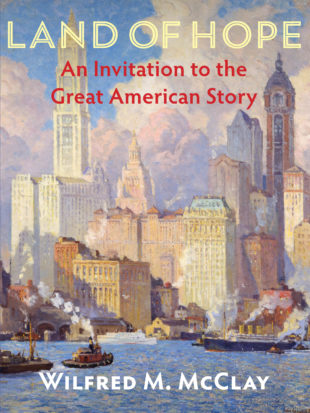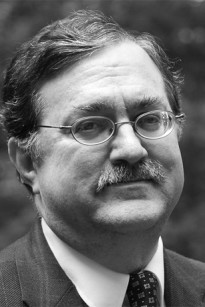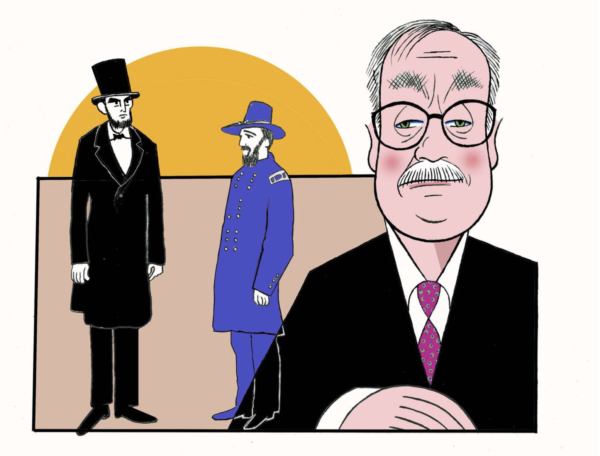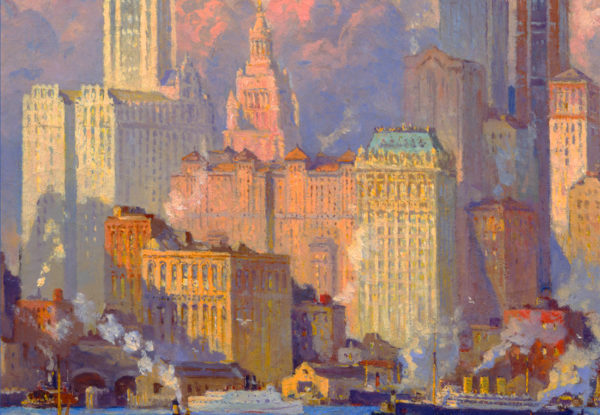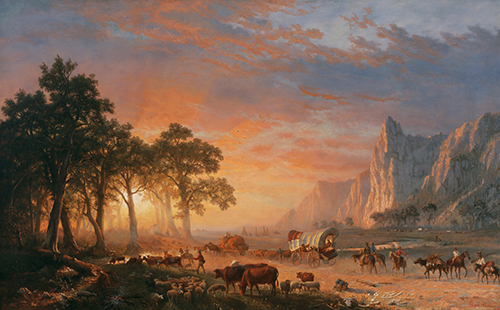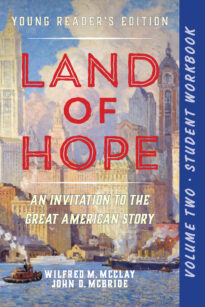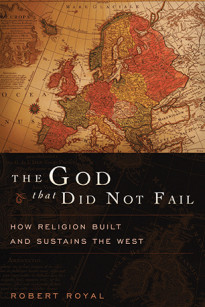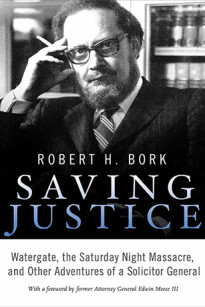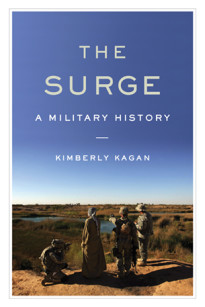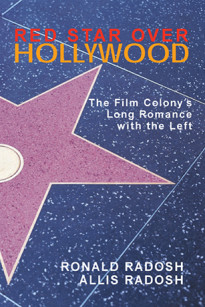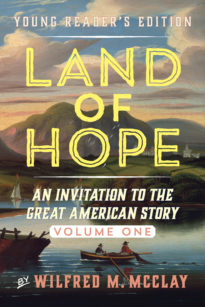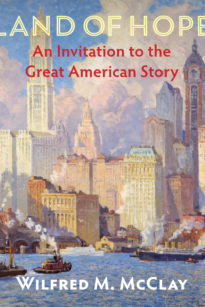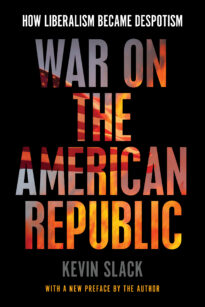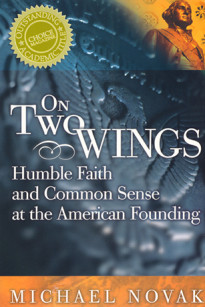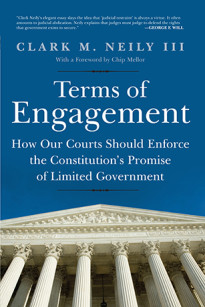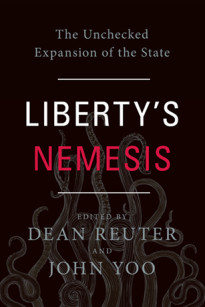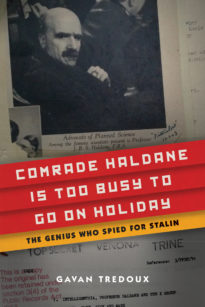History always begins in the middle of things. It doesn’t matter where you choose to start the story; there is always something essential that came before, some prior context that is assumed. This is why the past can’t be divided up into convenient self-contained units, with clear and distinct beginnings and endings, much as we might wish it were otherwise. Instead, the spectacle that lies before us when we gaze backward is more like a sprawling, limitless river with countless mingling branches and tributaries, stretching back to the horizon. Like a river, time’s restless force pushes ever forward, but its beginnings lie far back, extending far beyond what we can see, fading into the mists of time at the edges of lands beyond our knowing.
Consider the story of your own life. The story didn’t begin with you. You didn’t call yourself into existence out of the void. You didn’t invent the language you speak, or the foods you eat, or the songs you sing. You didn’t build the home you grew up in, or pave the streets you walked, or devise the subjects you learned in school. Others were responsible for these things. Others, especially your parents, taught you to walk, to talk, to read, to dress, to behave properly, and everything else that goes with everyday life in a civilized society, things that you mainly take for granted.
But it’s important to remember that those others didn’t come into the world knowing these things either. Your parents didn’t invent themselves any more than you did. And the people who taught them were just the same in that regard, taught by people before them, who were taught by people before them, and so on, in an ever-lengthening chain of human transmission that soon carries us back into the misty unknown. We carry the past forward into the present much more than we realize, and it forms a large part of who we are. Even at the moment of birth, we already find ourselves in the middle of things.
So how far back would you go in telling your own story? You could go back pretty far, if you wanted to. Many people are fascinated by tracing out their family histories, their genealogies. The details can be surprising and intriguing, and they may reveal unsuspected things about your ancestors. But too much of that will get in the way of relating the most important parts of the story and illuminating the pattern of your own life. Too much detail muddies the picture and defeats the ultimate purpose.
What we call “history” is the same way. It is not the sum of the whole past. It doesn’t include everything, and it couldn’t. Instead, it is a selection out of that expansive river of the past, like a carefully cropped photograph, organized wisely and truthfully, which allows us to focus in with clarity on a particular story, with particular objectives in mind.
The story that this book seeks to tell, the story of the United States, is exactly like this. It is not going to be the story of everything. It’s a story about who we are and about the stream of time we share; it is an attempt to give us a clearer understanding of the “middle of things” in which we already find ourselves. And it is crafted with a particular purpose in mind: to help us learn, above all else, the things we must know to become informed, self-aware, and dedicated citizens of the United States of America, capable of understanding and appreciating the nation in whose midst we find ourselves, of carrying out our duties as citizens, including protecting and defending what is best in its institutions and ideals. The goal, in short, is to help us be full members of the society of which we are already a part.
*****
So where to begin? After all, there is a long, complex, and fascinating prologue to this story. We could go back many thousands of years, to the very edges of the mist, and examine what we know, or think we know, about the ancient origins of this country. And as in a family genealogy, we would find some surprises.
For one thing, it turns out that there are no peoples that could truly be called “native” to America, because all appear to have migrated there from other parts of the world. In other words, the entire western hemisphere, including both North and South America, was from the start populated by immigrants, by peoples who came there from someplace else, in search of something new and better.
Our best guess at present is that the first human settlers came over into the western hemisphere twenty thousand to thirty thousand years ago from northeastern Asia, probably by crossing over an icy land bridge or by island hopping across what is now the Bering Strait, the frigid waters that separate Russia and Alaska. From there, we believe that these first immigrants to America gradually filtered outward and downward, thinly populating all of North and South America, from the frozen Yukon to the southernmost tip of Patagonia, and east to the Atlantic coast and the forests and rivers and swamps of the American Midwest and South.
Some of those migrant peoples would long remain confined to the life of Stone Age nomads, for whom the elemental power of fire, along with crude implements made of stone or bone, were their chief shields against the pitiless ferocity of nature. Others, however, moved into more settled forms of habitation, adopting the practice of agriculture and, in some cases, eventually developing into highly advanced cultures. These cultures rose, flourished, and fell, blazing a trail across time but leaving behind for us little literature or history, only a few poignant material reminders of them. Most impressive of these to us today were the classic cultures of Middle and South America, the Mayas and Aztecs of Mexico and the Incas of Peru, which erected formidable civilizations featuring splendid cities filled with elaborate pyramids, temples, and courts, some of which structures survive to the present day.
Far less grand but just as intriguing are the remains of the North American settlements, such as those of the Adena and Hopewell cultures, that left large earthworks and burial mounds scattered across the landscape of the American East and Midwest, still readily visible today in ordinary places like Chillicothe, Ohio, or Romney, West Virginia. These, too, are eerily silent clues to a once-flourishing but now vanished way of life. Much the same can be said of the ancestral Pueblo peoples of the arid Four Corners region of the American Southwest, sometimes called by the Navajo name “Anasazi,” a peaceful and highly organized people who left behind their startlingly modern-looking multistory cliff dwellings tucked in beneath overhanging cliffs, structures whose remnants can still be seen today in places like Mesa Verde, Colorado, and the Chaco Canyon area of northwestern New Mexico.
There is something haunting and melancholy about the remaining traces of these earliest civilizations. Hints of their once-grand presence still linger in the American landscape, like faded echoes of a distant drama. Their mysteries intrigue us. But they are in only the most remote sense a part of American history. They do not play an important role in this book, simply because they had no direct or significant role in the establishment of the settlements and institutions that would eventually make up the country we know as the United States.
Neither did the later discovery and exploration in the early eleventh century of a New World by adventurous Norse seamen like Leif Eriksson of Iceland, an enterprising fellow who sought to plant a colony on what is now the large Canadian island of Newfoundland. He and other Norsemen tried their best to establish a settlement in this newfound land to the west, to which he gave the cheerful name of “Vinland,” but their efforts came to nothing and are generally counted as historical curiosities—interesting false starts on American history, perhaps, but no more than that.
*****
But not so fast. Maybe this statement needs to be modified. Maybe the lost civilizations of the first Americans and the episodic voyages of Eriksson and other Norsemen, taken together, do point powerfully, if indirectly, toward the recognizable beginnings of American history. For they point to the presence of America in the world’s imagination as an idea, as a land of hope, of refuge and opportunity, of a second chance at life for those willing to take it.
Perhaps that seems a fanciful statement. After all, we can never be sure exactly what forces and impulses led those earliest Asiatic peoples twenty thousand years ago to cross over into Alaska and make the dangerous and costly journey to populate a new continent. What was in their minds? Were they mainly pushed by dire necessity, such as war or scarcity? Were they hunters who were merely following their quarry? Or were they in part pulled into the new lands by a sense of promise or opportunity, or even adventure, that those lands offered?
We don’t know. The answers to those questions will probably always remain beyond our reach. But we know that the Norsemen’s brave impulse of over a thousand years ago, which drove them to go forth in search of new lands, came out of something more than mere necessity. They were drawn to cross the icy and turbulent waters of the North Atlantic by the lure of available western lands and by a restless desire to explore and settle those lands. And they were influenced by sentiments that were already widespread in their time, a thousand years after Christ and five hundred years before Columbus.
From the beginning, there was a mystique about the West. Leif’s explorer father, Erik the Red, played upon that very mystique when he gave the alluring name of “Greenland” to the largely frozen island mass we know by that name today. He was appealing to an idea already long embedded in literature, myth, and religion that there were new lands of plenty and wonder and mystery out there—perhaps even an earthly paradise—waiting to be found, lying somewhere in lands beyond the western horizon. This message was especially alluring at the dawn of the new millennium, at a time when post-Roman Europe was stagnating, disorganized, and underdeveloped, still struggling to get back on its feet.
But the message itself was not new. The ancient Greeks had spoken this way a millennium and a half earlier. They sang of the Isles of the Blessed, where the heroes and gods of their mythology dwelled in a fertile land where there was no winter, and of the Elysian Fields, which the poet Homer located on the western edge of the earth, beside the stream of the world’s seas. Centuries later, at the outset of a new age of exploration, Sir Thomas More’s book Utopia (1516) described an ideal society located on an island in the West, as did Francis Bacon’s The New Atlantis (1627), whose very title recalled one of the most enduring legends of the West—the strange story of the isle of Atlantis, a fully developed civilization with kings of great and mighty power that had been swallowed up by the seas and disappeared forever from view.
So the West had long been thought of, in Europe, as a direction offering renewal and discovery, a place of wealth and plenty, a land of hope—a vivid anticipation of what a New World could be like. And as we shall soon see, the shape taken on by this expectation would owe more to the yearnings of the Old World than to the realities of the New.
*****
So, since we must begin in the middle of things, we will start our history of America in the middle of Europe’s history. In fact, the two histories cannot be understood apart from one another. America is best understood as an offshoot of Europe; even the name “America” comes from the first name of the Italian-born navigator and explorer Amerigo Vespucci, who was among the first to speculate that the lands Columbus discovered were not the easternmost parts of Asia but part of an entirely new landmass.
But America would prove to be an unusual kind of offshoot. It was not like a new branch emerging out of the trunk of a great tree, duplicating the appearance and structure of the trunk and the tree’s other branches, nor was it a careful and deliberate transplant, a smaller spin-off of what had already been established in Europe. Instead, it would receive certain parts of Europe, certain fragments that had been broken off from the whole— particularly English laws and customs—and would give those fragments a new home, in a new land, where they could develop and flourish in ways that would never have been possible in their native habitat. But so much of it was unpredictable, unplanned, unanticipated. The writer Lewis Mumford expressed this surprising process in a single brilliant sentence: “The settlement of America had its origins in the unsettlement of Europe.”
What did Mumford mean by this? He meant that by the time of Christopher Columbus’s famous voyage in 1492, which was one of the signal events in the making of America, Europe was becoming a dramatically different place from what it had been for the three preceding centuries, during the relatively stable and orderly years we now call the High Middle Ages (1000–1300). By the Late Middle Ages (1300–1500), Europe was entering the modern age, in the process becoming a place of pervasive change and innovation of all kinds. A great upsurge in fresh energies and disruptions, converging from many different directions at once, was unsettling a great deal of what had become familiar in the older world.
If any one of these innovations or disruptions had come along by itself, without the company of others—say, if the desire for an expansion of global commerce had not been accompanied by breakthrough inventions that provided the technological means to make such commerce possible—its effects would have been far less pronounced. But by coming together at once, these innovations gathered strength from one another, so that they contributed to a more general transforming fire, as when many small blazes fuel a greater conflagration. Such is the case with all great historical transformations; they arise not out of a single cause but out of the confluence of causes. This unsettling transformation of Europe that was already well under way in 1492 was throwing off flames that would land in other places and set off transformations there as well. The exploration and settlement of America would be one of the most consequential of these flames, the product of a host of great European disruptions: economic, social, religious, technological, and cultural.
*****
What makes the story even more surprising is the fact that the movement toward the West actually began with a movement toward the East. Some key changes for Europe were wrought unintentionally by the Crusades, which were a Church-sanctioned military effort in the eleventh to thirteenth centuries to free the Holy Lands from their Muslim occupiers, who had in the four centuries since the death of Mohammed in 632 conquered two-thirds of the Christian world. Far from being intended as an early act in the unsettlement of medieval Europe, or as an act of unprovoked aggression, the Crusades were meant to be part of Europe’s ongoing work of self-restoration. They were in many ways a perfect expression of the high medieval spirit in Western Europe, a world that was dominated by the Roman Catholic Church as a spiritual, political, and military power.
But we are more concerned here with one of the indirect effects of the Crusades, which was to bring Europeans into contact with the riches of the lands along the eastern shores of the Mediterranean Sea, consequently opening up overland trade routes to Asia, from which many desirable goods, such as rugs, silks, gold brocade, perfumes, teas, precious stones, dye-woods, and unusual spices such as pepper, nutmeg, and cloves could be imported.
Small wonder that the East came to hold such a cultural fascination for many Europeans. A widely read memoir by the Venetian traveler Marco Polo, featuring spellbinding stories of his adventures along the Silk Road and in the lavish court of the Mongol emperor Kublai Khan, gave Europeans their first direct knowledge of the fabled wealth of China and Central Asia and sparked the restless imaginations of future explorers like Columbus and Ferdinand Magellan. The benefits of commerce with Asian cultures were obvious and enticing.
There were many obstacles, however. Overland trade with the East along the legendary Silk Road was slow, costly, and dangerous, and became more so after the fall of Constantinople to the Ottoman Turks in 1453. It could take a year to go from Venice to Beijing by land, traversing mountains and deserts on narrow trails with cargo packed on the backs of horses and camels. Muslim Turks and other unfriendly groups controlled the land routes to the east, so that even if travelers were able to elude bandits, there would be levies to be paid to local potentates and middlemen along the way, making the goods very expensive by the time they finally arrived at markets in Europe. As consumer demand for these luxuries grew and interest in trade with the East swelled, it became more and more urgent to find a better way of getting there, and back. The search was on to discover an all-water route to the East, which, if found, would go a long way toward solving these problems.
This search helped more generally to boost the era’s attention to oceangoing exploration and stimulate a thoroughly modern passion for extending and mapping the contours of the known world. Fortunately, vital technological inventions and improvements in navigation and ship design became available that made such expansive voyages possible—advances in mapmaking and astronomical navigation, the dry magnetic compass, the astrolabe, the quadrant, the cross-staff, and other such instruments, as well as the development of new ships, such as the oceangoing Genoese carrack and the fast and maneuverable Portuguese caravel, whose ingenious combination of differently shaped sails enabled them to move easily against the wind.
Innovation did not stop there, though. The rapid expansion of trade was remaking the social and political map of Europe, at the same time that explorers were redrawing the physical map. In earlier eras, wealth and power had rested in the hands of those who owned land, but that was about to change. The years of expanding seaborne travel saw the rising economic and political power of a merchant class made up of those traders who had become wealthy from the risks and rewards of expanding commerce. Those years also saw the steadily growing importance of bustling market towns and port cities where the merchants’ commercial activities would come to be concentrated and where a host of ancillary middle-class businesses and professions—bankers, lawyers, insurance providers, outfitters and suppliers of goods and services, teachers—would set up shop and thrive.
These changes would have far-reaching effects, further unsettling the existing order. The spectacular rise of the new merchant elites in places like Lisbon, Seville, and Venice challenged the power of old local and regional aristocracies, whose power had been based on their possession of land in a relatively closed and stationary feudal economy. Such older elites either had to accommodate themselves to the newcomers or be swept aside. The older ways were no match for the dynamic, wealth-generating, and disruptive new economics of trade.
Such changes would give rise in turn to new and unprecedented political structures. In Italy, ambitious merchant-princes used their new wealth to create powerful city-states, such as Florence and Venice, which featured glamorous palaces, churches, and other architectural and artistic wonders echoing the glories of Greek and Roman antiquity. In other places, the changes would lead to the emergence of great national monarchies, unified and centralized kingdoms over which individual rulers would be able to govern with vast authority and power. Such monarchs managed to break the hold of the local nobles and regional aristocrats who had dominated the feudal system and to create a larger and more cohesive nation featuring a new kind of national-scale order, with a uniform national currency, a removal of internal barriers to trade, a professional standing military that kept internal order and supported the nation’s interests abroad—all innovations that would further the interests of the merchant and middle classes, even as they helped to build the nation.
By 1492, four such national states were emerging in Europe: France, England, Spain, and Portugal. All four had both the wealth and the motivation to support the further exploration that would be needed to find a water route to the East and to expand the reach of their commerce and their growing power.
*****
It was Portugal, though, that took the initiative in this Age of Discovery, early in the fifteenth century, under the guidance and patronage of Infante Henrique, later to be known as Prince Henry the Navigator (1394-1460). Portugal was a small country, but as the westernmost country of mainland Europe, with an extensive Atlantic coastline and the magnificent ports of Lisbon and Porto, it was perfectly situated to become an oceangoing power, and eventually the first global empire in the history of the world. Under Henry’s leadership, Portugal became a magnet for the most able and advanced navigators and seamen from all over Europe, who were drawn to take part in the expeditions he sponsored. Step by step, skilled Portuguese crews charted the entire west coast of Africa, opening it up to commerce, and eventually, explorers like Bartolomeu Dias and Vasco da Gama would round the southern end of the African continent and, by 1498, establish the long-sought waterborne path to India.
The example of such Portuguese exploits drew Christopher Columbus away from his native Italian city-state of Genoa to settle in Lisbon at the age of twenty-six. He was already a highly experienced and capable sailor who had been to ports in the Mediterranean and northern Europe and, in partnership with his brother, voyaged under the Portuguese flag as far north as the Arctic Ocean, south along the coasts of West Africa, and west to the Azore Islands. Like everyone else of the time, he was obsessed with the idea of discovering an all-water route to “the Indies,” as the Far East was called; but he had his own ideas about the best way of doing it. Everyone else was confident that going east and rounding Africa was the key; Bartolomeu Dias seemed to have confirmed that when he rounded Africa in 1488. But Columbus became convinced that going west would be both faster and more direct, and he formulated a plan for an expedition that would prove it.
When he took the plan to the King of Portugal in search of financial support, however, he was turned down—twice. Then he appealed to leaders in Genoa and Venice, and in England, and then in Spain, and had no luck with any of them. All of them said the plan was impractical and grossly underestimated the distances involved. Finally, however, after determined negotiations, Columbus was able to persuade the Spanish monarchs Ferdinand and Isabella to support him, and they signed an agreement called The Capitulations of Santa Fe . On August 3, 1492, he set sail from Palos de la Frontera in Spain aboard a large carrack called the Santa Maria, accompanied by two caravels and carrying a Latin passport and a sheath of letters of introduction, including a letter of introduction from Ferdinand and Isabella to the Emperor of China, just in case. He also brought along a Jewish scholar who was conversant in Arabic so that he would be able to communicate with any Muslims he encountered at his Oriental destinations. What may have been lacking in hard evidence for Columbus’s theories he more than made up for by the fervency of his faith. He fully expected that he would end up in the Far East.
Not only was Columbus fiercely determined, but he was a superb and knowledgeable sailor, with all the latest navigational tools in his arsenal. But a spirit of almost unimaginable daring was required to face the perils of a transatlantic voyage in his time, since it meant placing oneself at the mercy of harsh elements that could crush and drown one’s fragile enterprise at any moment. Nor could Columbus really know exactly where he was going. Despite all his calculations, most of which were wildly inaccurate, his voyage would be a giant leap into the unknown. The shape of the larger world was still a murky mystery, as can be seen in the crude maps at Columbus’s disposal, such as the 1491 Henricus Martellus map that he very likely studied in advance of his voyage. After a month at sea without sight of land, his crew began to feel overwhelmed by the dread of a watery death, and they threatened to mutiny. Yet Columbus stood adamant, and his commanding determination prevailed over their worries. The three ships sailed on.
On October 12, his party spotted land, one of the islands of the Bahamas, which Columbus named “San Salvador,” meaning “Holy Savior.” What they had found was in fact an outpost of a new and unexplored landmass. But Columbus refused to believe that these lands could be anything other than the “Indies” he had counted upon finding, and he accordingly called the gentle Taíno natives who greeted them by the name “Indians.” To be sure, he found none of the plentiful spices, jewels, gold, silver, and other precious goods that Marco Polo’s account had led him to expect. The Caribbean islands were beguilingly beautiful, but they were full of exotic plants and trees that did not correspond to anything he knew or had read about. He was able to admit that he did not recognize them. But he was not able to imagine that he was looking at an altogether New World.
Between 1492 and 1503, Columbus commanded four round-trip voyages between Spain and the Americas, all of them under the sponsorship of the Spanish Crown. He was not the first European to reach the Americas, but he was the first to establish enduring contact between the Old World and the New. Hence his voyages are of great significance in the history of Europe and mark a proper beginning for our story as the first elements of Europe’s unsettlement that would reach western shores and begin to give rise to the settlement of America.
But Columbus was not able to see it that way. He insisted, in the face of all evidence to the contrary, that the lands he visited during those voyages were part of Asia. He was possessed by an iron resoluteness that his initial theory had be true. By his third voyage, which took him to present-day Venezuela, he came to believe that, while that land was not the Indies proper, it was merely a barrier between him and them and that all that remained was to find a strait or other passage through. His final voyage was an unsuccessful effort to find that strait, a journey that took him even to what would later be the site of the Panama Canal, just a few miles away from the immensity of a Pacific Ocean that he never knew was there. But he returned home in disgrace and was regarded as a failure.
What a strange irony it is. He had made one of the most important discoveries in human history, and yet he didn’t quite realize it. He was never able to understand the meaning of what he had discovered. His preoccupation with finding a new way to reach the riches of the East was the force that had propelled him into a far more momentous discovery in the West, the mysterious land of mythic renewal. And yet he could not see what was before him with fresh and open eyes. He was blind to its possibilities.
In 1951, almost five hundred years later, the American poet Robert Frost would capture this irony in a witty poem about Columbus called “And All We Call American”:
Had but Columbus known enough
He might have boldly made the bluff
That better than Da Gama’s gold
He had been given to behold
The race’s future trial place,
A fresh start for the human race.
America is hard to see.
Less partial witnesses than he
In book on book have testified
They could not see it from outside—
Or inside either for that matter.
America is hard to see. Columbus had trouble seeing America for the new thing that it was, and could be, and eventually would become. He was not the first, and he would not be the last. It is part of the human condition, and a recurrent feature of human history, that what we find is not always what we were looking for, and what we accomplish is not always what we set out to do.
Hence, too, the reality that Columbus’s journeys were also the beginning of a great collision of cultures, a process that nearly always entails tragic and bitter consequences. Hence the cruel irony, as we shall see, that the settlement of America by newcomers would also produce a profound unsettlement for those who were not newcomers. The fresh start for the world came at a heavy price for those who were already settled on the land, men and women for whom San Salvador was not a New World being discovered but an old and familiar world about to be transformed.
